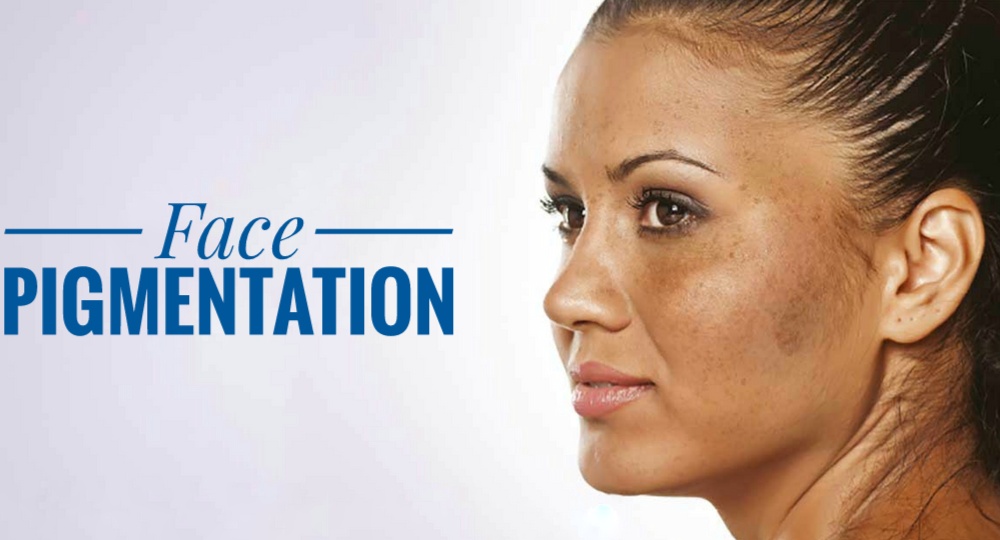What causes pigmentation?
Pigmentation appears on women’s skin much more often than men’s skin.
Our hormones, nutritional deficiencies, UV exposure, inflammation, and genetics are all major influencers of the disorder.
Pigmentation likely occurs when the pigment producing cells in the skin (melanocytes) produce too much pigment (or melanin). The underlying hormone responsible for triggering the melanocytes is melanocyte stimulating hormone (MSH). This hormone increases the production of melanin, which is responsible for darkening the skin.
People with darker skin are more prone to pigmentation because they have more active melanocytes than people with light skin.
- Hormone fluctuations.
This is why pigmentation is often seen during pregnancy, and in those women using oral contraceptive pills and hormone replacement therapy (HRT) – because hormonal levels are elevated and stimulate melanocytes both directly and indirectly to increase pigment production.
2. Hormones + stress.
Cortisol is part of the problem, so avoiding stress where possible can help manage the condition. As you become stressed (whether it be physical, psychological or emotional), your body produces increasing levels of the hormone cortisol to help cope with the stress. More cortisol creates an imbalance in oestrogen levels, and these elevated oestrogens upregulates MSH levels, which in turn increases the amount of melanin produced.
Re-establishing balance in stress and hormonal levels are one of the keys to prevention and management of pigmentation.
3. Hormones + thyroid.
Other hormones also have been shown to play a role in pigmentation. Studies highlight that individuals with thyroid disorders, specifically autoimmune thyroid conditions, had a higher incidence of pigmentation as well.
4. Eating Habits.
Improper eating habits can also cause skin pigmentation. Intake of fatty food, the absence of protein or vitamin-rich food etc. bring negative impact on the skin.
5. Genetics.
Recent studies have found that pigmentation tends to run in families regardless of whether a man or women inherits the condition.
6. Overexposure to the sun
It can cause overproduction of melanin, which in turn can damage the skin. Excessive sunlight and the UV rays make the skin darker, especially the face, hands, and other visible parts of the body.
7. Irritation from skin care products.
Be careful of how you treat your skin. If a product or procedure irritates your skin whether due to heat or friction resulting in trauma, pigmentation can worsen due to stimulating melanin production. This has been shown in association with intense pulsed light therapy, microdermabrasion and some chemical peels.
The pigmentation can fade or go away entirely when the cause is removed – some time after the baby is born and hormones settle, or if the person stops taking hormones. However, the patches can last for many years or be permanent.
How can pigmentation be stopped and treated?
- Limit sun exposure as soon as you notice you are getting dark spots on your face. As sun exposure is a leading trigger for pigmentation, sun protection is at the top of the list for both prevention and management of this condition. When heading outdoors wearing a broad-brimmed hat, sunglasses, and a SPF cream is important. I prefer natural moisturisers and sunscreens and also with physical sunscreens like zinc oxide because it is tolerated by most skin types and less prone to cause irritation. My favourites are :
- Antipodes Immortal SPF 15 Face & Body Moisturiser https://naturaldispensary.co.uk/products/Immortal_SPF_15_Face_Body_Moisturiser_60ml-8044-0.html
- Green People Day Solution Cream SPF 15https://naturaldispensary.co.uk/products/Day_Solution_Cream_SPF15_50ml-5983-0.html
- Green People Scent-Free Facial Sun Cream SPF30https://naturaldispensary.co.uk/products/Scent_Free_Facial_Sun_Cream_SPF30_50ml-15650-0.html
- Tropic Skincare Sun Balm SPF 50 https://tropicskincare.com/products/sun-balm-spf-50
2. Protect with good nutrition. Additional sun protection strategies include eating an anti-inflammatory diet rich in antioxidants and phytonutrients which means loading your plate full of colourful fruits, vegetables, healthy fats like olive and avocado oil as well as omega-3 fatty acids like salmon. Make sure you are getting enough protein.
Supplements to consider before heading outdoors include those that contain grape seed extract, green tea extract, astanxanthin and omega-3 fatty acids.
3. Make sure you are not deficient in Vitamin D – the lower level you have, the more you are prone to pigmentation. Aim for a level of 150-200 nmol/l (70-100 ng/ml) . Supplement all year round in UK, just keep checking your levels once a year to adjust the dose.
4. Apply topical treatments. Talk to the dermatologist about the different topical treatments that are available. It’s important to have the right treatment for your skin type and lifestyle, so be sure to discuss all the options with a qualified professional.
From natural treatments , you can try topically these options:
– Vitamin C (L-Ascorbic acid): Vitamin C is a natural antioxidant that prevents the absorption of UV radiation and the subsequent formation of free-radicals, so it prevents melanin from forming. It is well tolerated and can be used alone or in combination with other topical therapies.
– Niacinamide (Vitamin B3): Studies have shown niacinamide to be effective for pigmentation. Melanocytes produce melanosomes which give skin its colour; niacinamide can block melanin transfer to the outer layers of the skin.
These therapies may work better when combined with a series of chemical peels with either Glycolic, Salicylic, or Trichloroacetic Acid. Peels and topical therapies should be adjusted according to skin type and under the guidance of your dermatologist for best results. Talk to a qualified dermatologist or a beauty therapist with a medical degree.
5. Other treatments include micro needling, laser, microdermabrasion and light-based therapies. Only a highly trained professional should perform these procedures – worsening of pigmentation or new skin problems may occur when the person who performs the treatment does not tailor it to the client’s skin type.

